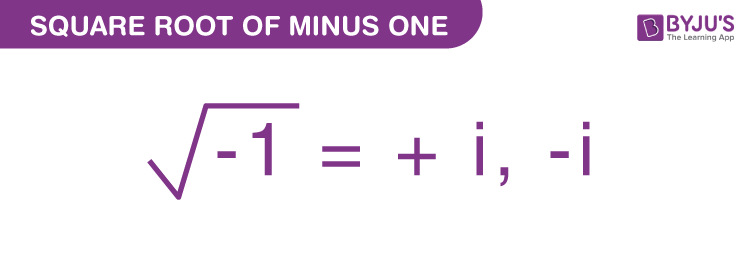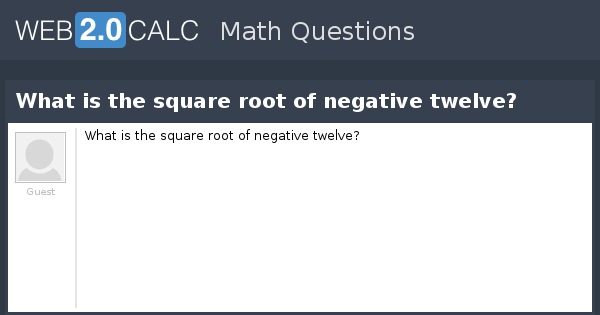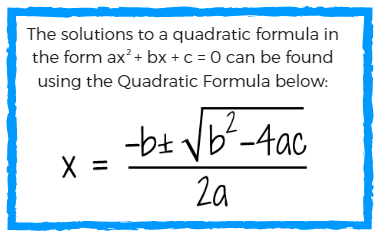Topic 2 square root of 12: Welcome to our comprehensive guide to understanding the mathematical expression 2 square root of 12. Whether you're a student brushing up on your algebra skills or someone curious about the intricacies of square roots, this article will break down the concept, provide step-by-step simplification techniques, and explore practical applications. Let's dive in!
Table of Content
- Understanding the Expression: 2 √12
- Introduction to 2 Square Root of 12
- Mathematical Concept of Square Roots
- Breaking Down the Expression 2 √12
- Prime Factorization Method
- Simplifying Square Roots
- Step-by-Step Simplification Process
- Combining Like Terms
- Final Simplified Form of 2 √12
- Mathematical Representation Using MathJax
- Applications of Simplified Expressions
- Common Mistakes to Avoid
- Practical Examples and Exercises
- Advanced Simplification Techniques
- Conclusion
- YOUTUBE: Hướng dẫn cách đơn giản hóa căn bậc hai của 12: căn(12). Video này sẽ giúp bạn hiểu rõ hơn về cách làm thế nào để đơn giản hóa biểu thức căn bậc hai.
Understanding the Expression: 2 √12
The mathematical expression 2 √12 can be simplified for a clearer understanding. Here's a detailed breakdown of how to simplify this expression and the steps involved.
Step-by-Step Simplification
Identify the Expression: We start with the expression 2 √12.
Prime Factorization of 12: We first find the prime factors of 12.
- 12 = 2 × 6
- 6 = 2 × 3
- So, 12 = 2 × 2 × 3
Rewrite the Square Root: The square root of 12 can be written as the square root of its prime factors.
√12 = √(2 × 2 × 3)
Simplify the Square Root: Group the factors under the square root to simplify.
√(2 × 2 × 3) = √(22 × 3)
Since √(22) = 2, we get:
√(22 × 3) = 2 √3
Combine the Constants: Now multiply the simplified square root by 2.
2 √12 = 2 × 2 √3 = 4 √3
Final Simplified Form
Therefore, the simplified form of 2 √12 is:
4 √3
Mathematical Representation
To represent this using MathJax, the expression and its simplification would look like:
\[2 \sqrt{12} = 4 \sqrt{3}\]
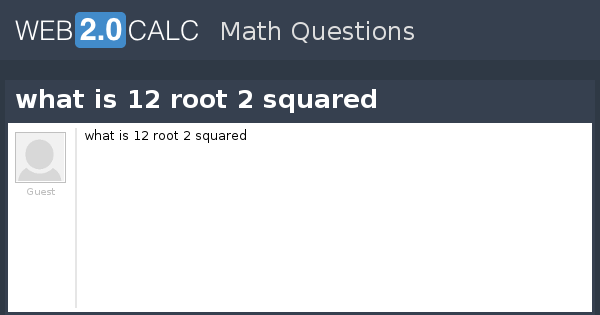
READ MORE:
Introduction to 2 Square Root of 12
The expression "2 square root of 12" refers to the mathematical operation of taking the square root of 12 and then multiplying the result by 2. It's a fundamental concept in algebra and arithmetic. Understanding this expression involves delving into the properties of square roots, prime factorization, and simplification techniques.
When we encounter expressions like "2 square root of 12," it's essential to understand the underlying principles to manipulate and simplify them effectively. This introduction sets the stage for exploring the various aspects of this mathematical expression in detail.
Mathematical Concept of Square Roots
The square root of a number is a value that, when multiplied by itself, gives the original number. For example, the square root of 9 is 3 because 3 multiplied by itself equals 9.
When we encounter the expression "2 square root of 12," it means taking the square root of 12 and then multiplying the result by 2. This involves understanding the properties of square roots, such as the fact that every positive real number has two square roots: one positive and one negative.
Understanding square roots is crucial in various mathematical fields, including algebra, geometry, and calculus. It forms the foundation for solving equations, manipulating expressions, and understanding geometric shapes.
Breaking Down the Expression 2 √12
To understand the expression \(2 \sqrt{12}\), we need to break it down into simpler parts and comprehend the mathematical operations involved. Here is a step-by-step explanation:
-
Understanding the Square Root: The square root of a number is a value that, when multiplied by itself, gives the original number. For instance, the square root of 9 is 3 because \(3 \times 3 = 9\).
-
Expressing 12 in Terms of Its Prime Factors: We start by expressing 12 as a product of its prime factors:
\(12 = 2 \times 2 \times 3\) or \(12 = 2^2 \times 3\).
-
Applying the Square Root to the Factors: We can take the square root of each factor separately:
\(\sqrt{12} = \sqrt{2^2 \times 3}\).
-
Using the Property of Square Roots: According to the property \(\sqrt{a \times b} = \sqrt{a} \times \sqrt{b}\), we can simplify:
\(\sqrt{2^2 \times 3} = \sqrt{2^2} \times \sqrt{3} = 2 \times \sqrt{3}\).
-
Combining with the Coefficient: Now, we multiply the simplified square root by the coefficient 2:
\(2 \sqrt{12} = 2 \times (2 \sqrt{3})\).
-
Simplifying the Expression: Finally, we combine the terms:
\(2 \times (2 \sqrt{3}) = 4 \sqrt{3}\).
Therefore, the simplified form of \(2 \sqrt{12}\) is \(4 \sqrt{3}\).
Here is the breakdown in a more visual format:
| Step | Expression | Simplified Form |
| 1 | \(2 \sqrt{12}\) | |
| 2 | \(2 \sqrt{2^2 \times 3}\) | |
| 3 | \(2 \times 2 \sqrt{3}\) | |
| 4 | \(4 \sqrt{3}\) | Final Simplified Form |
By following these steps, we can confidently simplify the expression \(2 \sqrt{12}\) to \(4 \sqrt{3}\).
Prime Factorization Method
To understand the expression \( 2 \sqrt{12} \), we first need to simplify \( \sqrt{12} \) using the prime factorization method. Here is a step-by-step breakdown:
-
Factorize 12 into Prime Factors:
Prime factorization of 12 is \( 12 = 2 \times 2 \times 3 \). This can be written as:
\[
12 = 2^2 \times 3
\] -
Apply the Square Root to the Factors:
To find \( \sqrt{12} \), we take the square root of each prime factor:
\[
\sqrt{12} = \sqrt{2^2 \times 3}
\] -
Simplify the Expression:
The square root of \( 2^2 \) is 2, so we can simplify \( \sqrt{12} \) as follows:
\[
\sqrt{12} = \sqrt{2^2 \times 3} = 2 \sqrt{3}
\] -
Multiply by the Coefficient:
Now, we return to the original expression \( 2 \sqrt{12} \) and substitute the simplified form of \( \sqrt{12} \):
\[
2 \sqrt{12} = 2 \times 2 \sqrt{3} = 4 \sqrt{3}
\]
Thus, the simplified form of \( 2 \sqrt{12} \) is \( 4 \sqrt{3} \). This method demonstrates how prime factorization can be used to break down and simplify square roots step by step.
Simplifying Square Roots
Simplifying square roots involves expressing the square root in its simplest form. This is done by factoring the number under the square root into its prime factors and then simplifying the expression by extracting squares from under the root. Let's take the square root of 12 as an example.
Here are the steps to simplify \(\sqrt{12}\):
- Prime Factorization: Find the prime factors of 12.
- 12 = 2 × 2 × 3
- Group the prime factors into pairs:
- 12 = (2 × 2) × 3
- Take the square root of each pair:
- \(\sqrt{12} = \sqrt{(2 \times 2) \times 3}\)
- \(\sqrt{12} = \sqrt{2^2 \times 3}\)
- Simplify by taking out the square factor:
- \(\sqrt{2^2 \times 3} = 2 \sqrt{3}\)
Therefore, the simplified form of \(\sqrt{12}\) is \(2\sqrt{3}\).
Now, let's incorporate the coefficient 2 in front of the square root of 12:
- We have the expression 2 \(\sqrt{12}\)
- Substitute the simplified form of \(\sqrt{12}\):
- 2 \(\sqrt{12} = 2 \times 2 \sqrt{3}\)
- Combine the coefficients:
- 2 \(\times 2 \sqrt{3} = 4 \sqrt{3}\)
Thus, the simplified form of the expression 2 \(\sqrt{12}\) is \(4\sqrt{3}\).
Using these steps, you can simplify any square root by breaking down the number into its prime factors and simplifying the expression.
Step-by-Step Simplification Process
To simplify the expression \(2 \sqrt{12}\), we can follow a step-by-step process:
Identify the prime factors of the number inside the square root.
The number inside the square root is 12. We can find its prime factors:
\(12 = 2 \times 2 \times 3\)
Group the prime factors into pairs.
Since we have \(2 \times 2\), we can pair these factors:
\(12 = 4 \times 3\)
Take the square root of each pair.
The square root of 4 is 2. We can now rewrite the expression as:
\(\sqrt{12} = \sqrt{4 \times 3} = \sqrt{4} \times \sqrt{3} = 2 \sqrt{3}\)
Multiply the result by the coefficient outside the square root.
We started with \(2 \sqrt{12}\). Now we can substitute the simplified form of \(\sqrt{12}\):
\(2 \sqrt{12} = 2 \times 2 \sqrt{3} = 4 \sqrt{3}\)
Thus, the simplified form of \(2 \sqrt{12}\) is \(4 \sqrt{3}\).
Combining Like Terms
Combining like terms is a fundamental technique in algebra that simplifies expressions, making them easier to work with. Like terms are terms that have the same variable raised to the same power. When combining these terms, you simply add or subtract their coefficients.
When dealing with square roots or radicals, the process is similar, but you combine only those terms that have the same radicand (the number under the square root). Here's how you can combine like terms involving radicals:
- Identify like terms: Ensure that the terms you want to combine have the same radical part. For example, \(2\sqrt{3}\) and \(5\sqrt{3}\) can be combined, but \(2\sqrt{3}\) and \(3\sqrt{5}\) cannot.
- Add or subtract coefficients: Combine the coefficients of the like terms while keeping the radical part the same. For example:
- \(2\sqrt{3} + 5\sqrt{3} = (2 + 5)\sqrt{3} = 7\sqrt{3}\)
- \(7\sqrt{2} - 3\sqrt{2} = (7 - 3)\sqrt{2} = 4\sqrt{2}\)
Let's look at a detailed example to understand this process:
Consider the expression:
\(3\sqrt{8} + 2\sqrt{2}\)
- Simplify each term:
- \(3\sqrt{8} = 3\sqrt{4 \times 2} = 3 \times 2\sqrt{2} = 6\sqrt{2}\)
- Rewrite the expression:
\(6\sqrt{2} + 2\sqrt{2}\)
- Combine like terms:
- \(6\sqrt{2} + 2\sqrt{2} = (6 + 2)\sqrt{2} = 8\sqrt{2}\)
Thus, the simplified expression is \(8\sqrt{2}\).
Here is another example:
Combine \(4\sqrt{5} - 3\sqrt{5} + 2\sqrt{3}\):
- Identify like terms:
- \(4\sqrt{5}\) and \(-3\sqrt{5}\) are like terms.
- \(2\sqrt{3}\) is not a like term with the others.
- Combine like terms:
- \(4\sqrt{5} - 3\sqrt{5} = (4 - 3)\sqrt{5} = 1\sqrt{5} = \sqrt{5}\)
- Rewrite the expression:
\(\sqrt{5} + 2\sqrt{3}\)
The final simplified form of the expression is \(\sqrt{5} + 2\sqrt{3}\).
Remember, combining like terms helps in simplifying expressions and solving equations more efficiently. Practice identifying and combining like terms to improve your algebraic skills!
Final Simplified Form of 2 √12
The expression \(2 \sqrt{12}\) can be simplified by breaking down the square root and combining like terms. Follow these steps to reach the final simplified form:
- Start with the original expression: \(2 \sqrt{12}\).
- Perform the prime factorization of 12: \(12 = 2 \times 2 \times 3\).
- Rewrite the square root of 12 using its prime factors: \[\sqrt{12} = \sqrt{2 \times 2 \times 3}.\]
- Group the factors inside the square root: \[\sqrt{12} = \sqrt{(2 \times 2) \times 3}.\]
- Take the square root of the perfect square (4) out of the radical: \[\sqrt{12} = \sqrt{4 \times 3} = \sqrt{4} \times \sqrt{3} = 2 \sqrt{3}.\]
- Substitute \(2 \sqrt{3}\) back into the original expression: \[2 \sqrt{12} = 2 \times 2 \sqrt{3}.\]
- Combine the like terms: \[2 \times 2 \sqrt{3} = 4 \sqrt{3}.\]
Therefore, the final simplified form of \(2 \sqrt{12}\) is:
\[\boxed{4 \sqrt{3}}\]
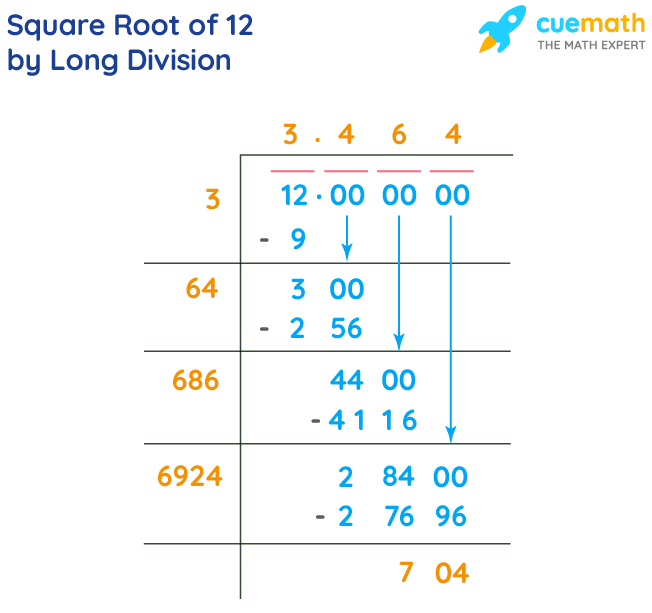
Mathematical Representation Using MathJax
MathJax is a powerful tool for displaying mathematical notation in web pages. Here, we will use MathJax to represent and simplify the expression \(2 \sqrt{12}\) step by step:
- Start with the original expression: \[2 \sqrt{12}\]
- Factorize 12 into its prime factors: \[12 = 2 \times 2 \times 3\]
- Rewrite the square root of 12 using its prime factors: \[\sqrt{12} = \sqrt{2 \times 2 \times 3}\]
- Group the factors inside the square root: \[\sqrt{12} = \sqrt{(2 \times 2) \times 3}\]
- Take the square root of the perfect square (4) out of the radical: \[\sqrt{12} = \sqrt{4 \times 3} = \sqrt{4} \times \sqrt{3} = 2 \sqrt{3}\]
- Substitute \(2 \sqrt{3}\) back into the original expression: \[2 \sqrt{12} = 2 \times 2 \sqrt{3}\]
- Combine the like terms: \[2 \times 2 \sqrt{3} = 4 \sqrt{3}\]
Thus, the final simplified form of \(2 \sqrt{12}\) is represented using MathJax as:
\[\boxed{4 \sqrt{3}}\]
Applications of Simplified Expressions
The simplified expression \(2 \sqrt{3}\) can be applied in various practical and theoretical scenarios. Here are some common applications:
-
Geometry:
In geometry, the simplified form of square roots is often used to calculate the side lengths of shapes, especially in problems involving right triangles and other polygons. For instance, if you have a right triangle with a hypotenuse that simplifies to \(2 \sqrt{3}\), you can determine the exact measurements needed for construction or design projects.
-
Physics:
In physics, square root expressions are used in formulas to calculate distances, speeds, and other quantities. For example, if an object is dropped from a height where the time of fall is represented by \(2 \sqrt{3}\) seconds, this simplified form helps in making accurate predictions about the object's behavior under gravity.
-
Engineering:
Engineers use simplified square root expressions in various calculations, such as determining the stress and strain on materials. For example, if a structural component needs to withstand a force that can be expressed as \(2 \sqrt{3}\) Newtons, this simplification helps in precise design and safety assessments.
-
Statistics:
In statistics, the standard deviation of a set of data points might involve square root calculations. Simplifying these expressions can make it easier to understand and interpret the variability in data. For instance, if the standard deviation is \(2 \sqrt{3}\), it provides a clear, concise measure of spread.
-
Everyday Mathematics:
In everyday life, simplified square roots are used in problems involving area and volume. For example, if you need to determine the side length of a square with an area of \(12 \text{ square units}\), simplifying \(2 \sqrt{3}\) provides an exact value, making practical tasks like home improvement or crafting more manageable.
By understanding and applying the simplified form \(2 \sqrt{3}\), you can tackle a wide range of problems across different fields, from academic studies to real-world applications.
Common Mistakes to Avoid
When working with square roots, especially in expressions like \(2 \sqrt{12}\), it's important to be aware of common mistakes to avoid errors in simplification and calculation. Here are some frequent errors and tips on how to avoid them:
- Incorrectly Adding Square Roots:
- Mistake: \( \sqrt{a} + \sqrt{b} = \sqrt{a+b} \)
- Correction: \( \sqrt{a} + \sqrt{b} \neq \sqrt{a+b} \). For example, \( \sqrt{4} + \sqrt{9} \neq \sqrt{4+9} \). Instead, \( \sqrt{4} + \sqrt{9} = 2 + 3 = 5 \).
- Forgetting to Simplify Under the Radical:
- Mistake: \( \sqrt{12} \) remains \( \sqrt{12} \)
- Correction: Simplify \( \sqrt{12} = \sqrt{4 \times 3} = 2\sqrt{3} \). Thus, \( 2 \sqrt{12} = 2 \times 2\sqrt{3} = 4\sqrt{3} \).
- Misapplying the Distributive Property:
- Mistake: \( 3\sqrt{3} + 3 = 6\sqrt{3} \)
- Correction: \( 3\sqrt{3} + 3 = 3(\sqrt{3} + 1) \), not \( 6\sqrt{3} \).
- Incorrect Squaring of Square Roots:
- Mistake: \( (\sqrt{a} + \sqrt{b})^2 = a + b \)
- Correction: \( (\sqrt{a} + \sqrt{b})^2 = a + b + 2\sqrt{ab} \). For example, \( (\sqrt{2} + \sqrt{3})^2 = 2 + 3 + 2\sqrt{6} \).
- Misunderstanding the Difference Between Addition and Multiplication:
- Mistake: \( 2\sqrt{3} \times 2\sqrt{3} = 4\sqrt{3} \)
- Correction: \( 2\sqrt{3} \times 2\sqrt{3} = 4 \times 3 = 12 \).
By being aware of these common pitfalls and practicing correctly, you can improve your accuracy in simplifying and working with square roots.
Practical Examples and Exercises
Understanding and applying the concept of simplifying square roots is crucial in various mathematical contexts. Here, we will explore practical examples and exercises that utilize the simplified form of or .
Example 1: Simplifying Expressions
Let's simplify the expression step-by-step.
- Recognize that can be factored as .
- Simplify the square root: .
- Multiply the simplified square root by the outside number: .
Example 2: Using Simplified Expressions in Equations
Solve for in the equation .
- Replace with its simplified form: .
- Divide both sides by 4: .
- The solution is .
Exercises
Try solving the following exercises on your own:
- Simplify .
- Solve the equation for .
- Simplify the expression .
These examples and exercises help reinforce the process of simplifying square roots and applying them in various mathematical contexts.

Advanced Simplification Techniques
Advanced simplification techniques for expressions involving square roots can help you handle more complex problems efficiently. Here, we will explore several methods for simplifying square roots beyond the basic steps.
- Factor Extraction: Identify factors under the square root that can be simplified. For example, with \(2\sqrt{12}\):
- First, break down 12 into its prime factors: \(12 = 2^2 \times 3\).
- Next, use the property \(\sqrt{ab} = \sqrt{a} \cdot \sqrt{b}\) to rewrite \(\sqrt{12}\): \( \sqrt{12} = \sqrt{4 \times 3} = \sqrt{4} \cdot \sqrt{3} = 2\sqrt{3} \).
- Therefore, \(2\sqrt{12} = 2 \cdot 2\sqrt{3} = 4\sqrt{3}\).
- Rationalization: This technique involves removing radicals from the denominator of a fraction.
- For example, simplify \(\frac{1}{\sqrt{3}}\) by multiplying the numerator and denominator by \(\sqrt{3}\): \( \frac{1}{\sqrt{3}} \cdot \frac{\sqrt{3}}{\sqrt{3}} = \frac{\sqrt{3}}{3} \).
- Combining Like Terms: When dealing with multiple terms involving square roots, combine like terms.
- For instance, \(3\sqrt{2} + 2\sqrt{2} = 5\sqrt{2}\).
- Double Square Root Simplification: Simplify expressions with nested square roots.
- For example, simplify \(\sqrt{5 + 2\sqrt{6}}\):
- Assume \( \sqrt{5 + 2\sqrt{6}} = \sqrt{a} + \sqrt{b} \).
- Square both sides: \( 5 + 2\sqrt{6} = a + b + 2\sqrt{ab} \).
- By comparing both sides, solve the system of equations to find \(a\) and \(b\).
- For example, simplify \(\sqrt{5 + 2\sqrt{6}}\):
- Exponent Rules: Apply exponent rules to simplify expressions with fractional exponents.
- For example, simplify \(\sqrt[3]{x^6}\):
- Rewrite as \( (x^6)^{1/3} \).
- Apply the exponent rule \((a^m)^n = a^{mn}\): \( x^{6 \cdot (1/3)} = x^2 \).
- For example, simplify \(\sqrt[3]{x^6}\):
By mastering these advanced techniques, you will be able to simplify complex expressions efficiently and accurately.
Conclusion
Understanding the simplification of 2 √12 is crucial for a solid grasp of mathematical concepts related to square roots and their applications. By breaking down the expression step-by-step, we have not only simplified it but also explored its practical implications and common mistakes to avoid.
The key steps in simplifying 2 √12 can be summarized as follows:
- Identify the prime factors of 12, which are 2 and 3.
- Rewrite √12 as √(22 * 3).
- Use the property of square roots to simplify √(22 * 3) to 2√3.
- Multiply the simplified square root by 2, resulting in 4√3.
Incorporating these steps ensures accurate simplification and aids in solving more complex problems efficiently. Let's review the final simplified form:
$$ 2 \sqrt{12} = 4 \sqrt{3} $$
This simplification is not only an important mathematical skill but also serves as a foundation for more advanced topics. Whether you are solving equations, working with algebraic expressions, or applying these principles in real-world scenarios, the ability to simplify square roots effectively is invaluable.
By mastering the process outlined in this guide, you can confidently approach a variety of mathematical challenges. Remember to apply these techniques consistently and practice regularly to enhance your proficiency. With a strong understanding of the principles behind simplifying square roots, you are well-equipped to tackle both academic and practical problems.
Thank you for exploring the comprehensive guide to understanding 2 √12. We hope this has provided you with clear insights and practical skills to apply in your mathematical journey.
Hướng dẫn cách đơn giản hóa căn bậc hai của 12: căn(12). Video này sẽ giúp bạn hiểu rõ hơn về cách làm thế nào để đơn giản hóa biểu thức căn bậc hai.
Cách Đơn Giản Hóa Căn Bậc Hai Của 12: Căn(12)
READ MORE:
Hướng dẫn giải bài toán căn bậc hai: căn bậc hai của 12 nhân với căn bậc hai của 3. Video này sẽ giúp bạn nắm vững kiến thức về cách xử lý các biểu thức căn bậc hai.
Đố Vui Căn Bậc Hai: Căn Bậc Hai Của 12 Nhân Căn Bậc Hai Của 3






